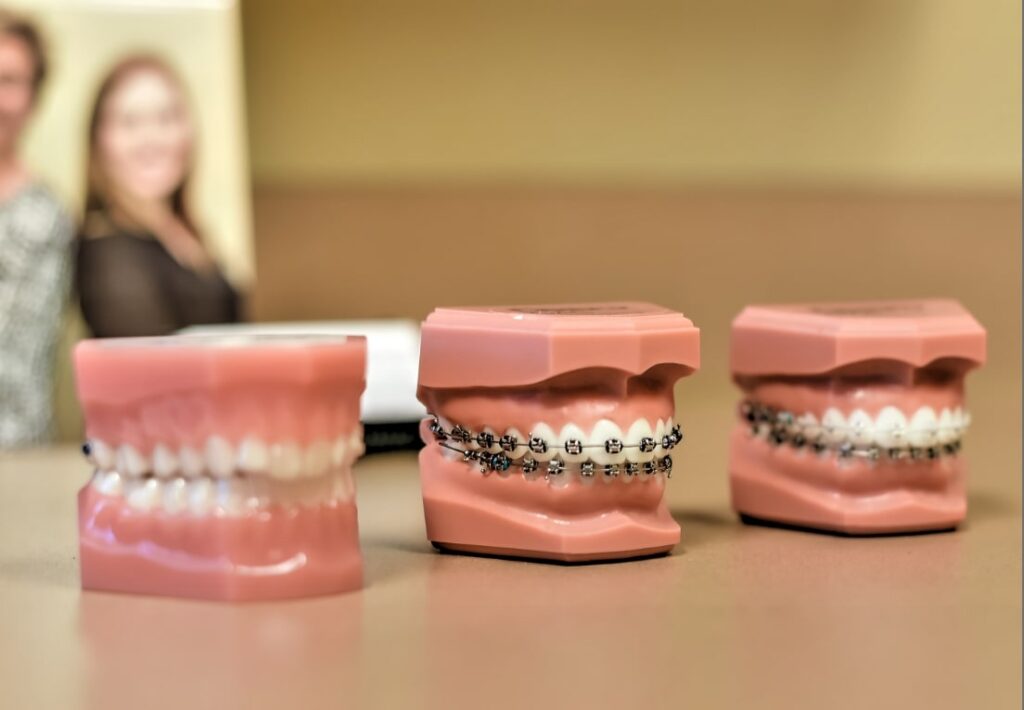How Cumming Orthodontics Can Change Your Smile with Invisalign and Braces
How Cumming Orthodontics Can Change Your Smile with Invisalign and Braces
Blog Article
Comprehensive Overview to Orthodontics Treatments for Correcting Oral Imbalances
In the realm of orthodontics, the journey to achieving a completely aligned smile entails a myriad of procedures customized to remedy oral misalignments. From conventional dental braces to unseen aligners and also surgical options, the field of orthodontics provides a range of services to attend to differing levels of oral abnormalities. Recognizing the intricacies of each procedure, including their mechanisms, benefits, and potential drawbacks, is important in making notified choices regarding one's orthodontic treatment. As we navigate through the extensive guide to orthodontic procedures for fixing dental misalignments, the intricate information of each approach will certainly unravel, clarifying the course toward a functional and unified oral placement.
Orthodontic Procedures Introduction

Routine modifications and tracking are vital components of orthodontic therapy to ensure progress is on track and to make any required modifications along the method. By going through orthodontic treatments, people can not just achieve a straighter smile yet also enhance their total oral health and function.
Typical Dental Braces: Just How They Work
When considering orthodontic treatments for oral misalignments, standard dental braces stand out as a time-tested technique for dealing with teeth positioning. Conventional dental braces are composed of brackets, cables, and bands that function with each other to apply constant stress on the teeth, progressively moving them into the preferred placement.
As stress is applied to the teeth with the dental braces, the bone bordering the teeth is reshaped to support the new tooth placements. Individuals will certainly need routine changes at the orthodontist's office to guarantee the dental braces continue to use the appropriate pressure for effective teeth movement.
Undetectable Aligners: Pros and Cons
These clear, tailor-made trays are practically unnoticeable when worn, making them an enticing choice for people seeking an extra visually pleasing orthodontic treatment. People can eliminate the aligners prior to eating or cleaning their teeth, decreasing the threat of food getting stuck see it here in the appliance and streamlining the cleaning procedure.

Surgical Orthodontic Options
Surgical treatments in orthodontics existing viable options for dealing with complex dental misalignments that might not be properly resolved via conventional orthodontic treatments. While unseen aligners and standard dental braces can fix numerous orthodontic issues, particular instances need surgical intervention to attain ideal results. Surgical orthodontic options are generally recommended for extreme malocclusions, substantial jaw inconsistencies, and cases where the underlying bone framework requires modification to achieve correct positioning.
One typical medical orthodontic treatment is orthognathic surgery, which entails repositioning the jaws to correct useful problems such as difficulty eating or speaking. This surgery is commonly carried out in collaboration with an orthodontist that helps straighten the teeth before and after the treatment. Surgical orthodontics may additionally involve treatments to subject influenced teeth, eliminate excess periodontal cells, or reshape the jawbone to create a much more harmonious face account.
Before taking into consideration surgical orthodontic alternatives, clients undertake a thorough analysis to identify the need and potential benefits of such interventions. orthodontist. While surgical treatment may seem overwhelming, it can considerably boost both the feature and aesthetic appeals of the smile in instances where conventional orthodontic treatments fall short
Retainers and Post-Treatment Treatment

Post-treatment treatment entails adhering to the orthodontist's instructions vigilantly. This may consist of appropriate oral hygiene methods, going to follow-up visits, and putting on the retainers as suggested. Failing to abide with post-treatment treatment guidelines can lead pediatric dental clinic to regression, where the teeth slowly return in the direction of their initial settings. Constant retainer wear, great dental health, and regular oral exams are essential for maintaining the results achieved via orthodontic surgery and ensuring the long-lasting stability of the fixed dental alignment.
Final Thought
In final thought, orthodontic treatments provide numerous options for dealing with dental imbalances. Surgical orthodontic alternatives are offered for extra severe imbalances. Overall, orthodontic procedures can properly improve dental wellness and aesthetic appearance.
As we browse via the extensive overview to orthodontic treatments for correcting dental imbalances, the intricate details of each technique will certainly unfold, shedding light on the path towards a harmonious and practical oral alignment. - cumming invisalign
One of the most common orthodontic treatments is the use of dental braces, which are composed of steel braces and wires that apply gentle pressure to slowly move teeth right into the wanted placement.When considering orthodontic treatments for dental misalignments, conventional braces stand out as a tried and true approach for dealing with teeth placing. In addition, invisible aligners may not be suitable for complex orthodontic issues that need more significant teeth movement, as they are usually suggested for light to modest instances. Retainers are personalized orthodontic tools created to hold teeth in their remedied placements after the conclusion of orthodontic therapy.
Report this page